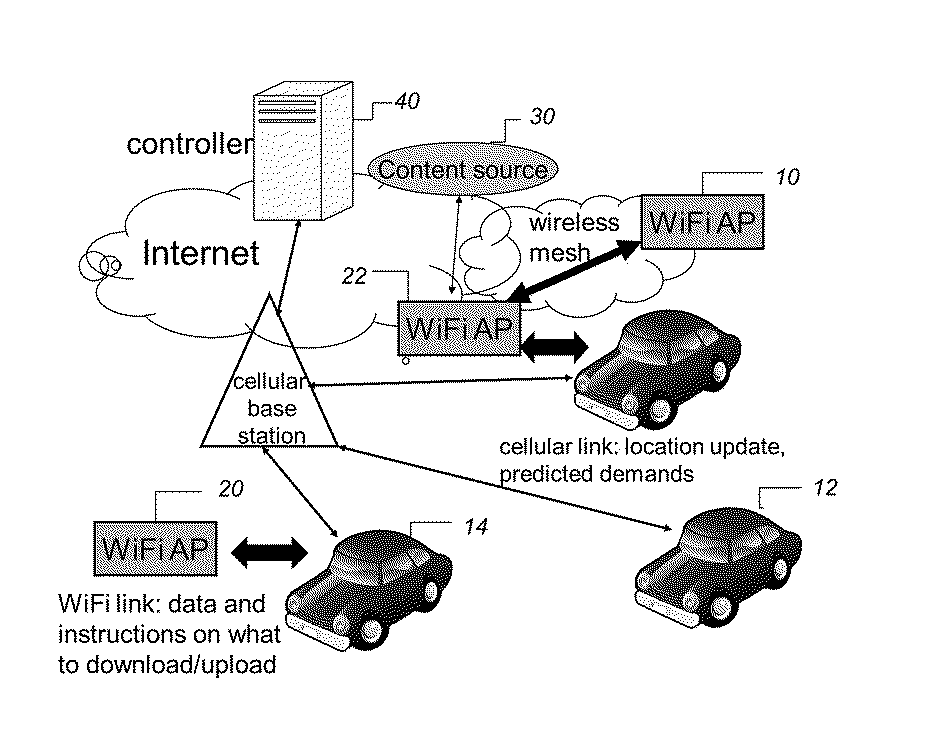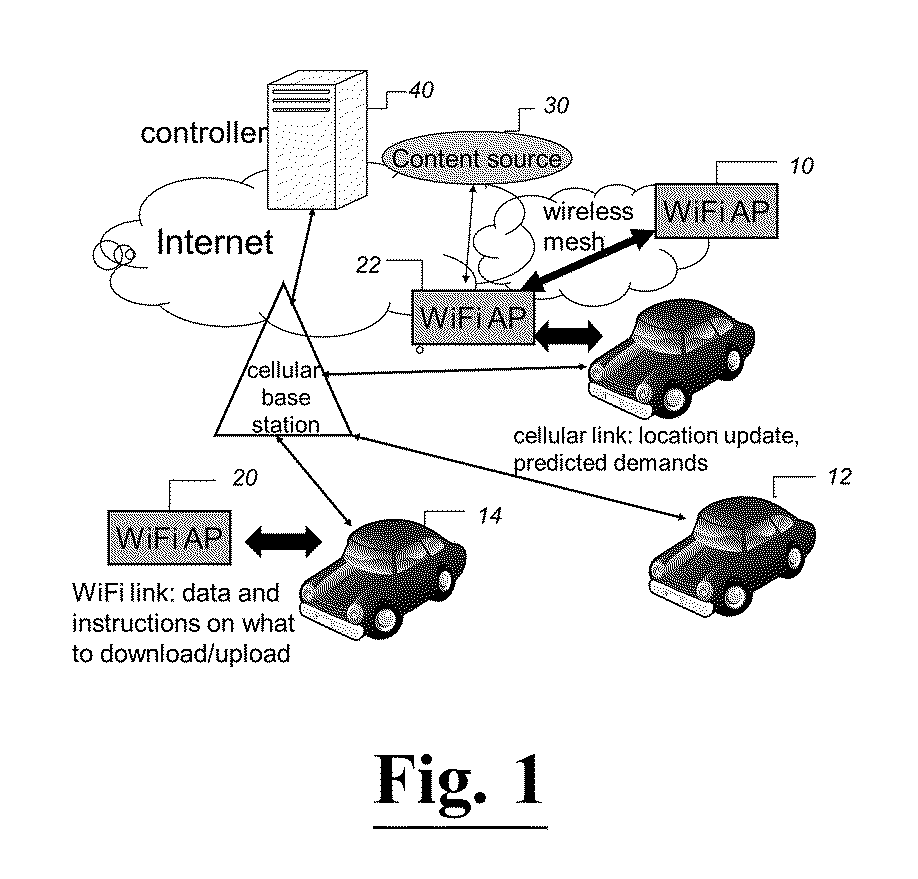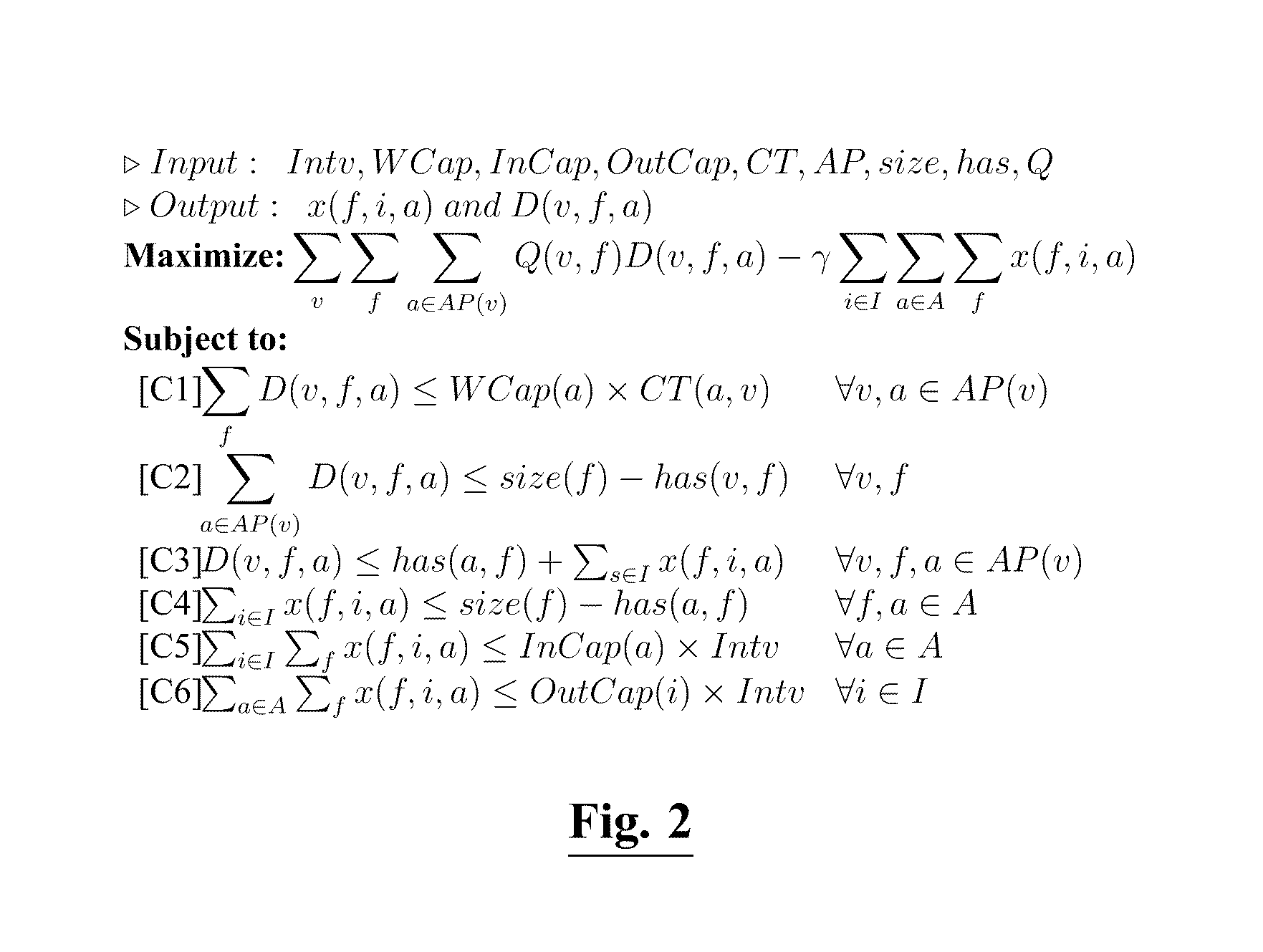Vehicular Content Distribution
a technology for vehicles and content, applied in the field of vehicles, can solve problems such as the potential for large data to be retrieved, and achieve the effects of increasing network capacity, facilitating vehicle mobility, and increasing internet connectivity coverag
- Summary
- Abstract
- Description
- Claims
- Application Information
AI Technical Summary
Benefits of technology
Problems solved by technology
Method used
Image
Examples
Embodiment Construction
[0038]While the making and using of various embodiments of the present invention are discussed in detail below, it should be appreciated that the present invention provides many applicable inventive concepts that can be embodied in a wide variety of specific contexts. The specific embodiments discussed herein are merely illustrative of specific ways to make and use the invention and do not delimit the scope of the invention.
[0039]In general, embodiments of the present invention provide a novel system, referred to as Vehicular Content Distribution (VCD), for enabling high-bandwidth content distribution in vehicular networks. According to one embodiment, in VCD, a vehicle opportunistically communicates with nearby access points (APs) to download the content of interest. To fully take advantage of such transient contact with APs, content can be proactively pushed to APs that the vehicles will likely visit in the near future. In this way, vehicles can enjoy the full wireless capacity in...
PUM
 Login to View More
Login to View More Abstract
Description
Claims
Application Information
 Login to View More
Login to View More - R&D
- Intellectual Property
- Life Sciences
- Materials
- Tech Scout
- Unparalleled Data Quality
- Higher Quality Content
- 60% Fewer Hallucinations
Browse by: Latest US Patents, China's latest patents, Technical Efficacy Thesaurus, Application Domain, Technology Topic, Popular Technical Reports.
© 2025 PatSnap. All rights reserved.Legal|Privacy policy|Modern Slavery Act Transparency Statement|Sitemap|About US| Contact US: help@patsnap.com



